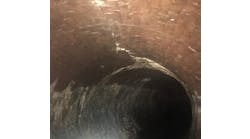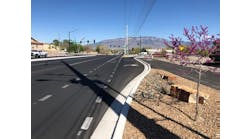Gravity separators are effective and economical tools used to process wastewater and stormwater by removing pollutants such as sediment, hydrocarbons and debris through the process of sedimentation or flotation.
Most separators have few or no moving parts, are easy to maintain and have a successful history of use in many different industrial, commercial and residential applications. Specifying engineers and regulators looking for gravity separators will find them well represented in the marketplace with many companies offering application-specific systems.
The term gravity separator is more of a reference to a process than a particular technology. The process of gravity separation refers to the settling (sedimentation or flotation) of particles from a conveying fluid due to gravitational forces. A very simple example of gravity separation would be when you throw a rock and it falls to the ground. The rock is denser than the air and possesses acceleration in a vertical plane perpendicular to the ground. The same process occurs as sediment falls out of suspension from water. The difference between these two examples is that the conveying fluid, air in the rock example and water in the sediment example, have very different densities and viscosities that, in turn, affect the settling velocity.
Settling velocity is affected by particle size, shape, specific gravity, and fluid viscosity. This is illustrated by Stokes Law:
V = (2gr2)(d1–d2)/9µ
V = velocity of fall (cm sec3),
g = acceleration of gravity (cm sec2),
r = “equivalent” radius of particle (cm),
dl = density of particle (g cm3),
d2 = density of medium (g cm3), and
µ = viscosity of medium (dyne sec cm2).
The long arm
Stokes Law is used to determine the size and performance of a gravity separator. There are several important considerations that should be taken into account when using Stokes Law to compute settling velocity.
First of all, Stokes Law applies to small, rigid, spherical particles (r = “equivalent” radius, which allows non-spherical particles to be modeled) in which drag force is the predominate force acting against the acceleration of gravity. In cases where the conveying fluid is turbulent, a modified Stokes Law equation should be used to account for the effect of turbulence on the settling particle.
In order to get optimal separation, flow should be as close to laminar as possible. This leads to one of the main drawbacks to using a gravity separator. Separators tend to be quite large relative to the flow rate that they treat. This is because the separator must slow the influent flow enough to give material time to fall out. This is accomplished by having a large volume relative to the influent flow rate. In areas where there may be a small footprint, a gravity separator may not be applicable because of its size.
Gravity separation can be enhanced through the use of a vortex, this sometimes is referred to as swirl concentration/separation. Through the use of a vortex, the settling velocity is increased due to an increase in the G-force, or the force of gravity. The relationship between the induced G-force and the change in velocity of the settling particle is a direct proportion relative to mass.
However, bear in mind that as particle size decreases the corresponding induced G-force must greatly increase. In a typical passive flow application swirl concentration may not measurably increase removal efficiency.
The use of coalescing plates is another example of technology used to enhance gravity separation. This type of technology is commonly seen in the petroleum industry for the removal of hydrocarbons from water. Coalescing plates are oleophilic and tend to attract very small oil droplets, which then coagulate on the plates until they are larger enough to float off of the plate to the surface. This process greatly improves the remove of emulsified hydrocarbons versus simple gravity separation.
Because of their simplicity gravity separators have been used in the wastewater and stormwater industries for decades. Applications ranging from pretreatment systems used to remove grit before a clarifier, such as a filter, to “stand-alone” systems used to remove sediment and oils before direct discharge. In pretreatment applications an efficient gravity separator will reduce clarifier cleanings, extend system life and increase performance.
In stand-alone applications, these separators can be a much more cost-effective system for treatment when compared to other technologies, such as a filter.
In stormwater applications, gravity separators catch and retain a variety of pollutants, such as sediments, oils, trash and organic debris. These systems intercept surface water runoff and are typically installed underground as part of the storm drain system. Baffle boxes, also known as three chambered boxes, are traditional examples of stormwater gravity separators.
Today, there is a multitude of gravity separators on the market to address stormwater applications. An example of this would be the BaySaver Separation System. This system is a hydrodynamic separator that uses two settling basins to remove pollutants by directing influent flows through the optimal path for treatment based upon flow rate.
Waste and stormwater
In wastewater applications, gravity separators are used to catch a wide variety of pollutants such as oils, greases, sediments and organic matter. These systems are commonly found in combined sewer overflow applications and as an integral component at wastewater treatment plants.
An example of a wastewater separator would be an American Petroleum Institute separator. These systems are commonly found in many industrial, commercial, municipal and retail facilities to help them comply with the EPA’s regulations for the proper treatment and discharge of contaminated stormwater runoff in compliance with the facility’s NPDES Phase I or II permit and for spill containment to satisfy the facility’s SPCC rules.
Just like any other treatment technology, gravity separators need to be inspected and maintained regularly to ensure proper performance. Inspection is typified by measuring sediment or oil depths and initiating system cleaning at a predetermine depth. In many applications, maintenance can be performed through the use of a vacuum truck or similar technology.
When maintained, the collected waste must be disposed of according to local regulations. Inspection and maintenance procedures are product dependent with information available from the separator manufacturers.
Because of their versatility and the large number of manufacturers building application-specific separators, the use of gravity separators will increase as water treatment regulations become stricter. These separators have a long history, have been explored scientifically, and are built upon well-understood principles. In many instances gravity separators represent an effective and economical tool for meeting wastewater and stormwater regulations.


